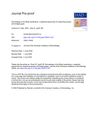Search
for
Sort by
Research
150-180 / 642 resultsresearch Understanding Melanocyte Stem Cells for Disease Modeling and Regenerative Medicine Applications
Melanocyte stem cells are crucial for skin pigmentation and have potential in disease modeling and regenerative medicine.

research Caution in the Time of Rashes and COVID-19
Skin symptoms linked to COVID-19 are hard to confirm, and more testing is needed to identify which are truly caused by the virus.

research Male Balding Is a Major Risk Factor for Severe COVID-19
Men with severe balding have a higher risk of getting very sick from COVID-19.

research Dermatology in the Black Barbershop: A Potential Opportunity for Expanding Access and Bridging Gaps
The conclusion is that Black barbershops could be used to expand dermatologic care, educate about skin conditions, and improve health access for Black men.
research Management of Patients and Side Effects During Cyclosporine Therapy for Cutaneous Disorders
Cyclosporine can treat skin conditions but needs careful monitoring for side effects.

research Correspondence
A man's skin cancer improved and some of his hair grew back after treatment with a special light therapy and a medication.

research Contents
The document summarizes recent dermatological treatments and advances in areas like pediatric care, wound healing, skin closure, light-based therapies, pigment disorders, hair loss, immunotherapy, infection management, melanoma, drug reactions, and facial rejuvenation.

research Adipocytes in Skin Health and Disease
Fat cells are important for healthy skin, hair growth, and healing, and changes in these cells can affect skin conditions and aging.

research Common Dermatologic Procedures
The document explains how to do skin procedures, care after surgery, and when to use certain treatments.
research Expression of the Heat Shock Protein-27 in the Adult Human Scalp Skin and Hair Follicle: Hair Cycle–Dependent Changes
Heat shock protein 27 is more present in the active growth phase of human scalp hair follicles.

research Cutaneous Features of Myotonic Dystrophy Types 1 and 2: Implications of Premature Aging and Vitamin D Homeostasis
Patients with myotonic dystrophy often have skin problems that suggest early aging and vitamin D issues, and the severity of these problems is linked to their genetic condition and vitamin D levels.

research British Society for Dermatopathology 2011 Findings
Dermatologists give better information on pathology forms, hypersensitivity vasculitis is a common skin issue, misdiagnoses can occur, and various skin conditions are linked to loss of elastin or genetic factors.

research Activating Wnt/β-Catenin Signaling Pathway for Disease Therapy: Challenges and Opportunities
Using drugs to activate the Wnt/β-catenin pathway has potential for treating diseases but also presents challenges.

research Presence and Future of Dermoscopy
Dermoscopy is becoming essential for diagnosing skin conditions and is expected to be a standard tool for dermatologists.
research Blue Light in Dermatology
Blue light can help treat skin conditions like eczema and acne without major side effects.

research Sparse Hairs Below Frontal Hairline Are Early Sign of Androgenetic Alopecia in Men
Sparse hairs below frontal hairline can indicate early male balding.

research Global Burden of Skin Disease as Reflected in Cochrane Database of Systematic Reviews
The representation of skin conditions in medical reviews partly matches their real-world impact.

research Detecting Shortcut Learning for Fair Medical AI Using Shortcut Testing
The ShorT method can detect and help reduce bias in medical AI by identifying shortcut learning.

research Meeting Report: The 15th Annual Meeting of the European Hair Research Society
The conference highlighted new diagnostic tools, the role of genetics in hair loss, and emerging treatments.

research Hair Follicle Stem Cells: A New Arena
Hair follicle stem cells have significant potential for treating various disorders.

research Early Androgenetic Alopecia as a Marker of Insulin Resistance
Early hair loss may indicate risk of insulin resistance.

research Immune-Related Alopecia (Areata and Universalis) in Cancer Patients Receiving Immune Checkpoint Inhibitors
Cancer patients treated with immune checkpoint inhibitors may develop alopecia, but some hair regrowth is possible with treatment.

research Biology of Melanocytes in Mammals
Melanocytes are important for skin and hair color and protect the skin from UV damage.

research Forum
The document concludes that various medications and treatments can have significant, sometimes adverse, effects on health outcomes.
research Phototherapy in Childhood Dermatoses
Phototherapy is effective and well-tolerated for treating childhood psoriasis and pityriasis lichenoides chronica.
research Animal Models of Psoriasis: What Can We Learn from Them?
Rodent models helped understand psoriasis but none perfectly replicated the disease.
research Efficacy of Topical Sensitizers in the Treatment of Alopecia Areata
Topical sensitizers have mixed success in treating alopecia areata.
research Targeted Knockout of Beta-Catenin in Adult Melanocyte Stem Cells Using a Mouse Line, Dct::CreERT2, Results in Disrupted Stem Cell Renewal and Pigmentation Defects
Removing β-catenin in certain stem cells causes hair whitening and pigmentation issues.
research In Vivo Role of Vitamin D Receptor Signaling in UVB-Induced DNA Damage and Melanocyte Homeostasis
Vitamin D receptor helps protect skin cells from UV damage and supports their growth.